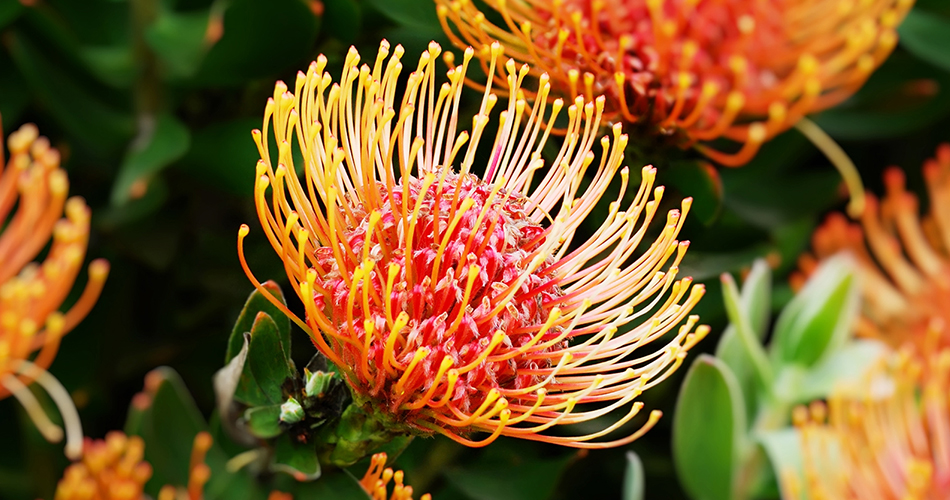Protea, is the name for a group of about 130 species of evergreen shrubs and small trees native to Africa. They grow to a height of 3 to 10 feet (0.9 to 3 meters). Proteas bear large flowers that may vary widely in size, shape, and color, depending on the species. The flower heads are surrounded by many overlapping bracts (leaf like structures) that may be white, pink, or red. Proteas are named after Proteus, a Greek sea god who could assume many forms.
Only a few species of proteas are cultivated. Probably the most common is the giant protea, also called king protea. It has flower heads that measure as much as 8 inches (20 centimeters) wide. Cultivated proteas grow best in climates with dry summers and mild, wet winters. In parts of California, they are grown commercially for their flowers. They are useful as ornamental plants.
Proteas require well-drained, slightly acid soil. They are started by planting seeds in the fall. Proteas tend to Flower heads of the giant protea grow up to 8 inches (20 centimeters) wide. The flowers can be white, pink, or red develop fungal diseases during their first year of growth unless treated with a fungicide.
Scientific classification. Proteas make up the genus. Protea in the protea family, Proteaceae. The scientific name for the giant protea is Protea cynaroides. Kenneth A. Nicely. Protection of wildlife.


Be First to Comment